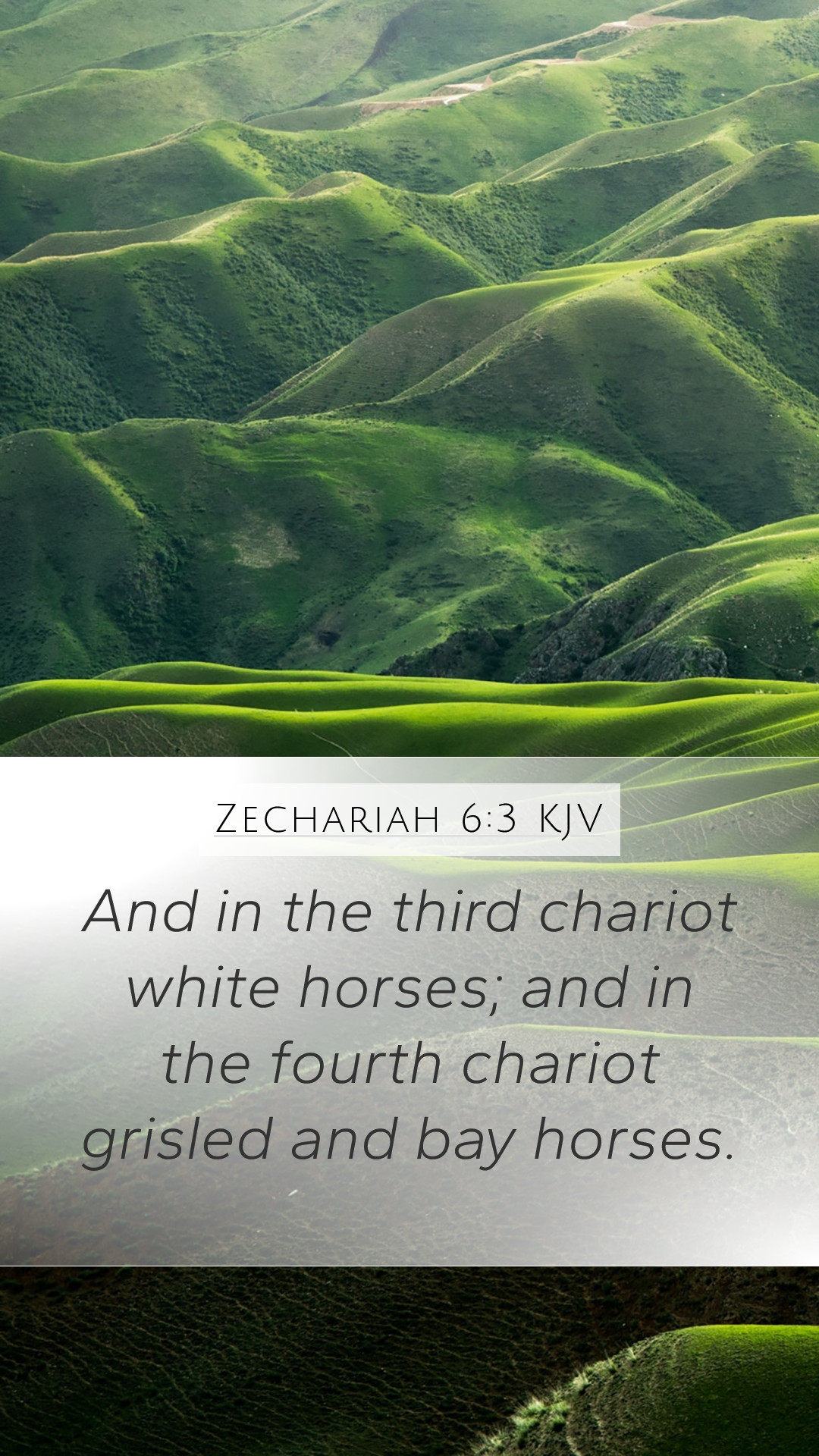Old Testament
Genesis Exodus Leviticus Numbers Deuteronomy Joshua Judges Ruth 1 Samuel 2 Samuel 1 Kings 2 Kings 1 Chronicles 2 Chronicles Ezra Nehemiah Esther Job Psalms Proverbs Ecclesiastes Song of Solomon Isaiah Jeremiah Lamentations Ezekiel Daniel Hosea Joel Amos Obadiah Jonah Micah Nahum Habakkuk Zephaniah Haggai Zechariah MalachiZechariah 6:3 Meaning
What is the meaning of Zechariah 6:3?
And in the third chariot white horses; and in the fourth chariot grisled and bay horses.
Zechariah 6:3 Bible Verse Meaning
Understanding Zechariah 6:3
In Zechariah 6:3, we read about chariots drawn by different colored horses, symbolizing God’s will and judgment being carried out in the world. This verse is rich in imagery and meaning, offering valuable insights for Bible study and interpretation.
Verse Context and Significance
This verse is part of a vision that Zechariah received, indicating the complexities of God’s plans for Israel, His people. Through the use of specific colors and the imagery of chariots, the prophet conveys deeper truths about the divine order prevailing over nations.
Commentary Insights
Taking insights from various public domain commentaries:
-
Matthew Henry:
Henry points out that the four chariots represent God's providential government over the earth. The colors symbolize different aspects of judgment and mercy, and the wheels signify the mobility of God's plans reaching every corner of the earth.
-
Albert Barnes:
Barnes emphasizes that the four chariots can be seen as a representation of the four spirits of God who are sent out to enforce God's decisions among nations. This interpretation concerns both immediate political events as well as broader spiritual truths about God's sovereignty.
-
Adam Clarke:
Clarke suggests that the diversity of colors in the horses indicates various operations of divine providence, suggesting that God rules over creation with both severity and grace.
Bible Verse Meanings and Interpretations
Understanding Zechariah 6:3 requires a deep dive into its symbolism and theological implications:
- Divine Sovereignty: God’s control over the forces of nature and nations is a recurring theme in Scripture.
- Judgment and Restoration: The imagery also signifies that while judgment occurs, there is a promise of restoration for God's people.
- The Four Spirits: The four colors can refer to the four cardinal directions, indicating that God's influence is universal.
Application of the Verse
This verse provides several lessons applicable to daily life and understanding Scripture:
- Trust in God’s Plan: No matter the circumstances, believers are reminded to trust in God's overarching plan for history.
- God’s Presence in Revelation: Engaging with challenging passages in the Bible encourages believers to seek God's presence and interpretation.
- Encouragement in Difficult Times: Just as Zechariah provided hope to the Israelites, this verse can be an encouragement to those facing trials.
Relevant Cross References
This verse connects with several other passages that help elucidate its message:
- Revelation 6:1-8 - The four horsemen of the apocalypse.
- Jeremiah 49:36 - Reference to God's command over the nations.
- Ezekiel 1:15-21 - The vision of the wheels within wheels, reflecting God's omnipresence and sovereignty.
Conclusion
In summary, Zechariah 6:3 serves as an essential reminder of God's control and plans for humanity. Through a combination of scriptural analysis and commentary perspectives, believers can gain a deeper understanding of the themes of judgment, sovereignty, and promise found in this rich biblical text.
Further Study Suggestions
For those looking to delve into Bible verse meanings, interpretations, and studies, consider exploring:
- Bible study groups for collective understanding.
- Online Bible study courses for structured learning.
- Bible study resources like guides and commentaries to enhance comprehension.
Keywords Recap
In your study or exploration of this verse, you might utilize the following keywords effectively:
- Bible verse meanings
- Biblical exegesis
- Understanding Scripture
- How to interpret Bible verses


